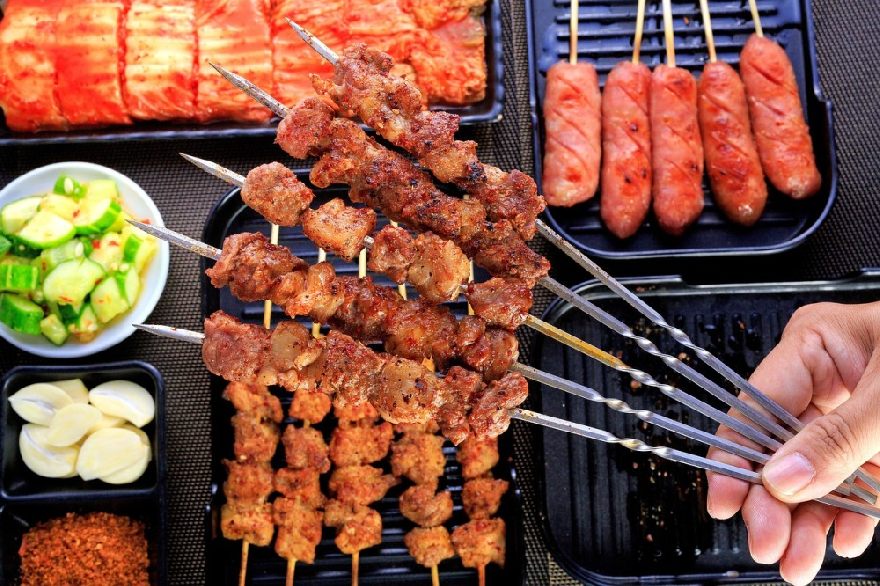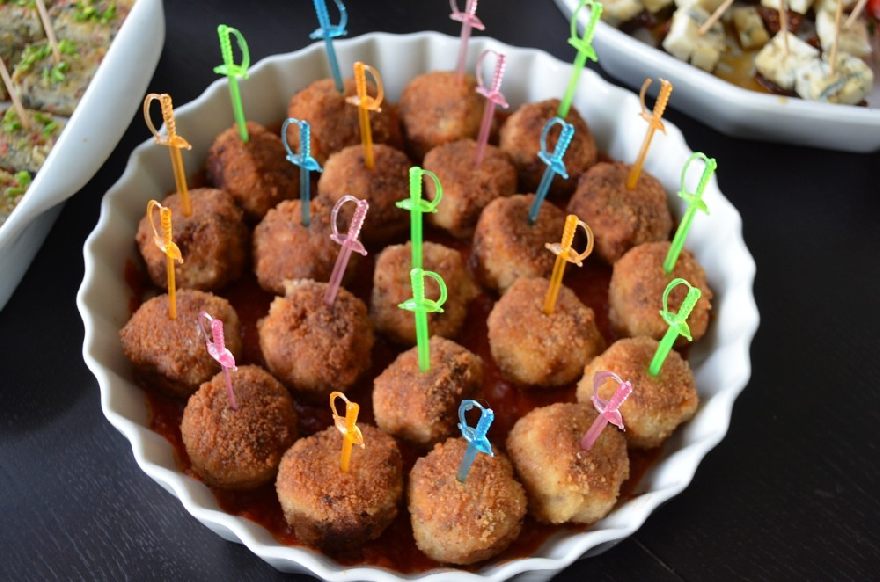Culinary cuisine in Brazil.
Brazilian cuisine is very diverse and influenced by indigenous peoples, African slaves and European immigrants. Well-known Brazilian dishes include feijoada, a bean and meat stew, and churrasco, grilled meat. Fruits also play a major role in Brazilian cuisine, particularly pineapple, papaya and guava. There are also many international restaurants and fast food chains in the cities.

Feijoada.
Feijoada is a traditional Brazilian dish made with beans and various types of meat such as beef, pork, and sausage. It is usually served with rice and slices of orange. There are also some regions in Brazil that have their own variations of feijoada, e.g. in Bahia, where the dish is served with fresh and dried fruits and cashew nuts. Feijoada is very popular, especially on weekends, and is a traditional dish often shared with family and friends.

Churrasco.
Churrasco is a grilled meat that is very popular in many regions of Brazil. It consists of various cuts of beef, pork and poultry cooked over an open fire or on a skewer. is grilled. It is often served with a variety of side dishes such as rice, beans, mashed potatoes and salads. Prepared in steak houses, on street stalls and even at home, churrasco is an integral part of Brazilian culture and social life. The name 'churrasco' originally comes from Spanish and means 'skewer of meat', and the word is common in many countries in South America.

Moqueca.
Moqueca is a traditional Brazilian dish served primarily in the Bahia region and parts of northeastern Brazil. It is a fish or seafood stew prepared in a terracotta or clay pot (also known as "panela de barro"). Moqueca is usually prepared with tomatoes, onions, coriander and the typical dendê Oil is prepared, which is obtained from the palm fruit and gives it a special taste. Often served with rice, it can also be topped with cassava flour or fresh fruits such as pineapple and papaya. Moqueca is a very popular dish in Brazil and is often served on special occasions or on weekends.

Acarajé.
Acarajé is a traditional African-Brazilian specialty made from baked bean balls. It's made from black beans that are soaked in water and then ground into a pulp, which is then formed into balls. These balls are then baked in oil until crisp and brown. They are then often stuffed with shrimp and onions and served with a sauce of coriander and chili. Acarajé is a popular street food in northeastern Brazil and is often sold by street vendors.

Mandioca.
Mandioca, also known as tapioca, yucca, or cassava, is a tuber that is common in Brazil and other parts of South America. It is often served as an accompaniment to meat and fish dishes, and is also processed as a flour to make pão de queijo, cheese balls, and other baked goods. It can also be used as a fry, mash or added to various dishes as a starch. Mandioca is an important food source in Brazil and other parts of South America and is often used as an alternative to rice or potatoes. It is rich in carbohydrates and also contains a certain amount of vitamins and minerals.

Cake.
In Brazil there are many different types of cakes, both sweet and savory. Some well-known sweet cakes are brigadeiro, a ball of condensed milk and chocolate, and bolo de rolo, a roulade cake with jam and coconut. Quindim, an egg, butter and sugar cake, and Pudim de Leite, a milk pudding, are also very popular. Salty cakes are often served as an appetizer or side dish and can be filled with various ingredients such as cheese, ham, peppers or peas. An example is Pastel, a type of dumpling often filled with different fillings.

Brigadeiro.
Brigadeiro is a very popular Brazilian cake made with condensed milk, butter and cocoa powder. It is formed into small balls and most often rolled in chocolate or grated coconut. It is a very sweet and sticky dessert that is often served at birthdays and other celebrations. There are also many variations such as using nuts or fruit. Brigadeiro is also a popular item for sale in cafes and patisseries and there are even specialist Brigadeiro shops.

Pastel.
Pastel is a popular Brazilian dumpling, often filled with different fillings such as cheese, ham, peppers or peas. It is usually fried and can be served as an appetizer or side dish. Pastel has its roots in Portuguese cuisine and is very popular in many regions of Brazil, especially in metropolitan areas like Sao Paulo and Rio de Janeiro. There are also many street food vendors selling pastels. There are both traditional fillings and modern variants based on international influences, such as Japanese or Chinese pastel.

Drinks in Brazil.
In Brazil, there is a wide variety of drinks, both alcoholic and non-alcoholic. One of the most famous alcoholic beverages is Cachaça, a liquor made from sugar cane juice and the base for Caipirinha, Brazil’s national drink. Other popular alcoholic beverages include beer and wine.
Among the non-alcoholic beverages, guaraná a well-known soft drink made from the fruit of a plant native to Brazil, also used in various types of lemonade and iced tea. Mate tea is also very popular in Brazil, especially in the south of the country.

Cachaca.
Cachaça is a Brazilian liquor made from fresh sugar cane juice. The alcohol content is usually around 38-48%. Cachaça originated in Brazil and is very popular there. It is the base for caipirinha, Brazil’s national drink, made with cachaça, lime and cane sugar. Cachaça can also be used in many other cocktails. There are both industrially produced Cachaça and artisanal Cachaça, which are produced in small quantities and are often of higher quality. Cachaça must according to&rsz;&rsz; According to Brazilian law, it can be stored in wooden barrels for at least a year, and some premium brands store it even longer.

Wine.
Wine is popular in Brazil, although it has a smaller tradition compared to other countries. The wine-growing regions are mainly located in the south of the country, particularly in the states of Rio Grande do Sul and Santa Catarina. Most Brazilian wines are made from European grape varieties such as Cabernet Sauvignon, Merlot and Chardonnay. There are also some wines made from native grape varieties such as Tannat and Baga. The quality ät of Brazilian wines has increased in recent years and there are now some wines that have gained international recognition. There are also many wineries and wine tastings in the country which are a popular tourist attraction.

Coffee.
Coffee is an important part of Brazilian culture and economy. Brazil is the largest coffee producer in the world, producing both Robusta and Arabica coffee. Most of the coffee is exported, but there is also a growing coffee scene in the country, particularly in the cities. Brazilian coffee is considered mild and balanced, with a medium body and low acidity.
Coffee in Brazil is often served as an espresso or as a "cafezinho" (small coffee) made with sugar and sometimes milk. Some regions also have their own coffee-making methods, such as "Café com Leite" in the state of Minas Gerais and "Carioca" in the state of Rio de Janeiro.
Besides coffee production, Brazil also has a growing specialty coffee scene, with some coffee farmers and roasters specializing in high-quality, sustainable and ethically produced coffee.


















